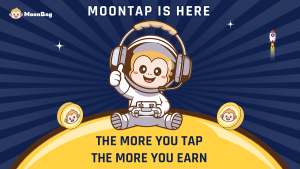1. What Is Solana (SOL)?


Solana is a highly functional open source project that banks on blockchain technology’s permissionless nature to provide decentralized finance (DeFi) solutions. While the idea and initial work on the project began in 2017, Solana was officially launched in March 2020 by the Solana Foundation with headquarters in Geneva, Switzerland.
To learn more about this project, check out our deep dive of Solana.
The Solana protocol is designed to facilitate decentralized app (DApp) creation. It aims to improve scalability by introducing a proof-of-history (PoH) consensus combined with the underlying proof-of-stake (PoS) consensus of the blockchain.
Because of the innovative hybrid consensus model, Solana enjoys interest from small-time traders and institutional traders alike. A significant focus for the Solana Foundation is to make decentralized finance accessible on a larger scale.
2. Who Are the Founders of Solana?


Anatoly Yakovenko is the most important person behind Solana. His professional career started at Qualcomm, where he quickly moved up the ranks and became senior staff engineer manager in 2015. Later on, his professional path shifted, and Yakovenko entered a new position as a software engineer at Dropbox.
In 2017, Yakovenko started working on a project which would later materialize as Solana. He teamed up with his Qualcomm colleague Greg Fitzgerald, and they founded a project called Solana Labs. Attracting several more former Qualcomm colleagues in the process, the Solana protocol and SOL token were released to the public in 2020.
3. What Makes Solana Unique?


One of the essential innovations Solana brings to the table is the proof-of-history (PoH) consensus developed by Anatoly Yakovenko. This concept allows for greater scalability of the protocol, which in turn boosts usability.
Solana is known in the cryptocurrency space because of the incredibly short processing times the blockchain offers. Solana’s hybrid protocol allows for significantly decreased validation times for both transaction and smart contract execution. With lightning-fast processing times, Solana has attracted a lot of institutional interest as well.
The Solana protocol is intended to serve both small-time users and enterprise customers alike. One of Solana’s main promises to customers is that they will not be surprised by increased fees and taxes. The protocol is designed in such a way as to have low transaction costs while still guaranteeing scalability and fast processing.
Combined with the longstanding professional expertise creators Anatoly Yakovenko and Greg Fitzgerald bring to the project, Solana is ranked number 7 in the CoinMarketCap ranking as of September 2021.
This came on the back of an impressive bull run, where Solana price gained over 700% since mid-July 2021. The launch of the Degenerate Ape NFT collection sent SOL price to an all-time high (ATH) above $60, and it has been climbing since, largely due to higher developer activity on the Solana ecosystem, greater institutional interest, growing DeFi ecosystem, and the rise of the NFTs and gaming vertical on Solana. Solana price rose to an ATH of $216 on Sept. 9, 2021.
Solana has received much praise for its speed and performance, and has even been tipped as a rival that can compare to Ethereum and challenge the dominant smart contract platform. However, the network has been plagued by repeated outages that have impaired its price and aspirations to be the "Visa of crypto." Furthermore, its ecosystem is accused of favoring venture capital investors with unfair tokenomics.
4. How Many Solana (SOL) Coins Are There in Circulation?


The Solana Foundation has announced that a total of 489 million SOL tokens will be released in circulation. At the moment, about 260 million of these have already entered the market.
The SOL token distribution is as follows: 16.23% went towards an initial seed sale, 12.92% of tokens were dedicated to a founding sale, 12.79% of SOL coins were distributed among team members and 10.46% of tokens were given to the Solana Foundation. The remaining tokens were already released for public and private sales or are still to be released to the market.
Solana price during the initial seed sale, held on April 5, 2018, was $0.04. Given the recent ATH, that represents an impressive 5400X return on investment (ROI).
5. How Is the Solana Network Secured?


Solana relies on a unique combination of proof-of-history (PoH) and proof-of-stake (PoS) consensus mechanisms.
Proof-of-history is the main component of the Solana protocol, as it is responsible for the bulk of transaction processing. PoH records successful operations and the time that has passed between them, thus ensuring the trustless nature of the blockchain.
The proof-of-stake (PoS) consensus is used as a monitoring tool for the PoH processes, and it validates each sequence of blocks produced by it.
The combination of two consensus mechanisms makes Solana a unique phenomenon in the blockchain industry.
6. Where Can You Buy Solana (SOL)?


SOL tokens can be purchased on most exchanges. One choice to trade Solana is on Binance, as it has the highest SOL/USDT trading volume, $753,103,225 as of September 2021.
Next is Coinbase, with a trading volume of $343,872,841. Other options to trade Solana include Bilaxy and Huobi Global. Of course, it is important to note that investing in cryptocurrency comes with a risk, just like any other investment opportunity.
To check Solana price live in the fiat currency of your choice, you can use CoinMarketCap’s converter feature directly on the Solana currency page, or the dedicated exchange rate converter page. Popular Solana price pairs include: SOL/USD, SOL/GBP, SOL/AUD,
SOL/JPY and SOL/EUR.
7. Related Pages:


Read more about Steem.
Check out Marlin.
Learn more about Decentralized Finance (DeFi).
Curious about the crypto space? Read our educational section — Alexandria.
Want to keep track of Solana prices live? Download the CoinMarketCap mobile app!
Want to convert Solana price today to your desired fiat currency? Check out CoinMarketCap exchange rate calculator.
8. What is Blockchain?


Blockchain is a decentralized and distributed ledger technology that securely records transactions across multiple computers in a verifiable and permanent way. It forms the underlying technology for cryptocurrencies like Bitcoin and enables transparency, security, and immutability.
9. What is Cryptocurrency?


Cryptocurrency is a digital or virtual form of currency that uses cryptography for security. It operates on decentralized networks, typically based on blockchain technology, and facilitates secure and transparent peer-to-peer transactions.
10. What is Bitcoin?


Bitcoin is the first and most well-known cryptocurrency, created in 2009 by an anonymous person or group known as Satoshi Nakamoto. It operates on a decentralized peer-to-peer network and is used for secure, transparent, and censorship-resistant transactions.
11. What is the difference between Bitcoin and Altcoins?


Bitcoin is the original and most widely recognized cryptocurrency, while altcoins refer to any other cryptocurrencies besides Bitcoin. Examples of altcoins include Ethereum, Ripple (XRP), Litecoin (LTC), and many others.
12. What is Staking?


Staking involves participants locking up a certain amount of cryptocurrency in a wallet to support the operations of a blockchain network. It is commonly associated with proof-of-stake (PoS) and delegated proof-of-stake (DPoS) consensus mechanisms, where participants receive rewards for helping secure the network.
13. How Can I Stake Cryptocurrency?


To stake cryptocurrency, you typically need to choose a platform or network that supports staking. Transfer your tokens to a compatible wallet, follow the staking instructions provided by the platform, and lock up the desired amount of cryptocurrency. Once staked, you may start earning rewards.
14. What Are Staking Rewards and How Are They Calculated?


Staking rewards are incentives provided to participants who lock up their cryptocurrency to support the network. The amount of rewards varies and is influenced by factors such as the network's inflation rate, the total amount staked, and the specific rules of the staking protocol.
15. Can I Unstake My Cryptocurrency at Any Time?


The ability to unstake and withdraw your cryptocurrency depends on the specific staking protocol and network. Some platforms may have lock-up periods or unbonding periods during which your staked tokens are inaccessible. Always check the terms and conditions of the staking service.
16. What are the Risks of Staking?


Staking comes with risks, including the potential loss of staked funds if a participant behaves maliciously or fails to fulfill their responsibilities. Market volatility can also impact the value of staked tokens. It's crucial to thoroughly research the staking protocol and understand the associated risks.
17. Can I Lose Money by Staking?


While staking is designed to be a rewarding activity, there is a risk of losing money, especially if the value of the staked cryptocurrency decreases or if the staking protocol encounters security issues. It's important to consider both the potential rewards and risks before participating in staking.





